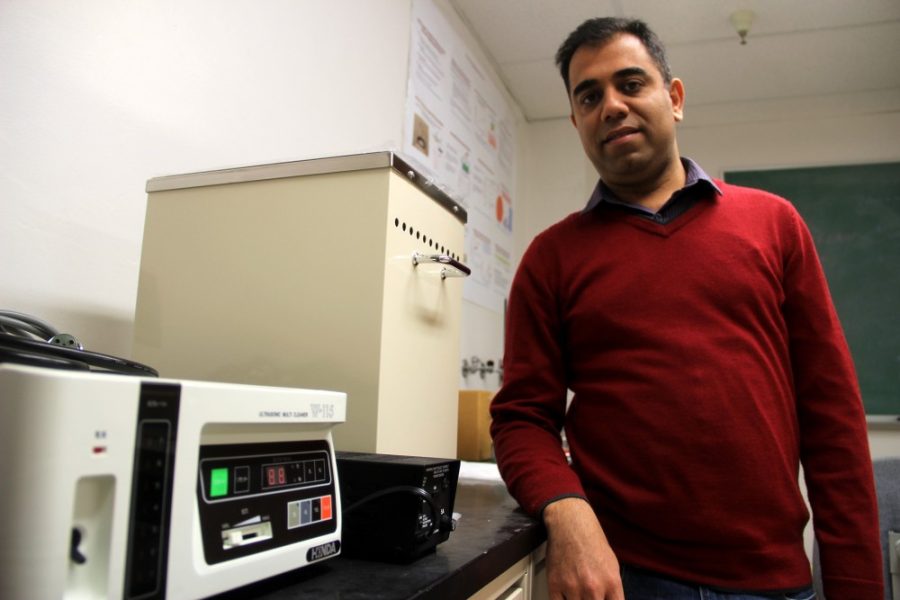UA researchers are using sound waves to destroy harmful firefighting chemicals for the Air Force.
Funded by a $243,000 grant from the Air Force Civil Engineering Center, the researchers will refine their sound-based technique in the hopes of eventually degrading the Air Force’s entire stockpile, which amounts to nearly 11 million liters.
The firefighting foam contains certain fluorochemicals that have been shown to damage the environment and are toxic to humans and animals.
“It is extremely important to destroy [the chemicals] because of the very high toxicity of these compounds,” said Reyes Sierra, a professor in the department of chemical and environmental engineering. “But the compounds are so difficult to degrade that there is a general lack of methods [for] dealing with these types of contaminants.”
The team’s approach will likely prove to be more economical than conventional methods, Sierra said, which entail the use of expensive chemicals and biological agents to break down the harmful chemicals.
“This method is relatively simple,” she said. “It just uses electrical energy.”
To degrade the problem chemicals, the researchers will use specialized instruments to pass sound waves through the firefighting liquid, said Manish Keswani, an assistant professor in the department of materials science and engineering and principal investigator for the project.
Keswani explained that the high-frequency waves create alternating pockets of low and high pressure that lead to the formation and collapse of tiny bubbles, a process known as cavitation.
The collapse of the microscopic bubbles, which can occur one millionth of a second after their formation, can raise the temperature of the surrounding molecules to more than 10,000 degrees Fahrenheit. At that temperature, many of the toxic compounds begin to break down.
The extreme conditions also lead to the formation of free radicals, which are unstable, highly reactive compounds that oxidize the hazardous chemicals, further degrading them, Keswani said.
“When you have the combination of these oxidizing radicals and extreme temperatures … our understanding is that you can degrade [all the fluorochemicals] present in water,” Keswani said.
As opposed to many of the past applications of sonolysis technology, which use a single frequency to break up chemical bonds, Keswani’s team will use multiple interfering frequencies to do the job.
In order to reach their long-term goal of implementing the sound-based technique on the large scale, the researchers will need to identify the optimal conditions that will allow for full degradation of the toxic chemicals.
They will do this using a new sonochemical reactor which is being fabricated by Weber Ultrasonics. The reactor will use multiple transducers that will emit sound waves at both ultrasonic and megasonic frequencies, Keswani said.
The reactor will be equipped with a UA-developed sensor that will “monitor the level of transient cavitation under different sound field and solution conditions,” allowing the researchers to further refine their technique, he added.
Rajesh Balachandran is a graduate student in the department of materials science and engineering who will be involved in the initial experiments for the project. He said he is excited to be working at the forefront of the emerging field of sonochemistry.
“It is not something which has really been studied a lot,” he said. “It’s cutting edge. That’s why I love it.”



